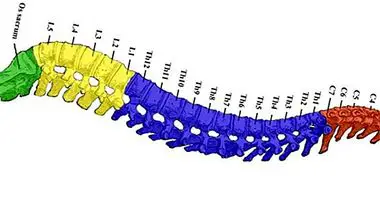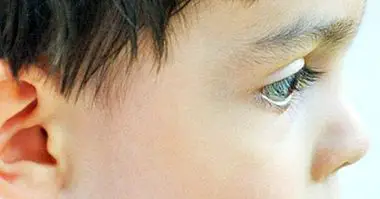Albino people: genetics and problems suffered in different parts of the world
The DNA that contains each one of the cells of your body contains all the information necessary for the development and functioning of an organism. Therefore, any defect that is located in the genetic material can degenerate into a malfunction and health problems.
A clear example is albinism This genetic condition is characterized by the total or partial absence of pigmentation (melanin) in the skin, hair and iris of the eye.
The albino condition is not exclusive to humans, it also occurs in animals (a memorable example was Copito de Nieve, the albino gorilla of Barcelona Zoo) and in plants. In the latter case, they have absence of other kinds of pigments, such as carotenoids, since they do not naturally present melanin.
However, the lack of pigmentation is not the only characteristic of this alteration. Albinos, in fact, have many associated problems , both biological and social.
- Related article: "What is epigenetics? Keys to understanding it"
The function of the pigments
Pigmentation in humans is in charge of a cell known as melanocytes , which make the two types of melanin in their interior from the amino acid tyrosine: eumelanin (dark) and pheomelanin (clear).
The combination in different proportions of these two originates the range of colors of eyes, hair and skin. Its main function is the protection of the rest of cells against ultraviolet light, which is harmful to DNA.
The genetic causes of albinism
Albinism It has an important genetic component that presents an autosomal recessive inheritance. It is easy to understand: our genetic material is composed of 23 pairs of chromosomes, one half comes from the mother and the other from the father (each pair has two homologous genes in the same position, one per couple, which is known as an allele) . Normally, only one of the two genes of an allele needs to work well for proper functioning. Well, in this case we are talking about autosomal recessive because the two genes of that allele are erroneous.
For this reason it is explained how non-albino parents can have a child with this condition, since parents are carriers , each one has a wrong gene.
- Maybe you're interested: "Types of major cells of the human body"
There are different types of albinism
Not all albino people have the same genetics, but there are different classes that depend on the gene that is affected. The truth is that not all of them lead to the loss of pigmentation of skin and hair, they only share the decrease in visual acuity by various alterations in the eye.
Classically, they have been defined two large groups: oculocutaneous albinism (OCA) and ocular (OA) . As its name suggests, the first one affects the melanin of both the eye and the skin and hair, unlike the second, in which only the present in the iris is affected. The lack of pigmentation can also be associated with other serious organic disorders, such as in the Hermansky-Pudlak syndrome.
At present up to 18 genes are known, with 800 possible mutations . To give an example, one of the most common types in the West is the OCA1, in addition to being the most severe, in which the affected gene is the one that synthesizes the tyrosinase enzyme (TYR). This protein is responsible for transforming the amino acid tyrosine into melanin within the melanocytes. As is logical, if the enzyme does not work, melanin is not synthesized in the body.
Problems that entails
People with albinism who have a total or partial lack of melanin in the skin and hair they have problems tolerating solar radiation . They have a tendency to redden and increase the likelihood of skin cancer, so they need to protect themselves from the sun, either by clothing or by appropriate cream.
The lack of pigmentation in the eye, common characteristic of all its types, It produces photophobia, that is, it does not tolerate direct light . It is usual to wear sunglasses to protect your eyes from light. We must add that albino people also have different visual anomalies that hinder their acuity, so one of their biggest problems is in the vision.
Albinos in the world
The world frequency of albinism is low, 1 in 17,000 people. But there are different types, each with its prevalence, and its degree of dispersion also depends on the point of the world that is spoken of. For example, in Japan there is a high prevalence of type OCA4, due to certain inbreeding; and on the island of Puerto Rico, which is considered the country with the highest incidence of this genetic condition, there are many more people affected in its most dangerous side, the Hermansky-Pudlak syndrome.
Africa is another example.The continent where albinos most often appear, also, does not make things easy for albino people: by archaic beliefs, some cultures kill these people and tear them to pieces in order to sell them to shamans for their spells . In the case of women it is even worse, since they are thought to have the capacity to eradicate HIV through sexual intercourse, so they are raped and infected with the disease. Added to the fact that Africa is the region of the world with the highest solar radiation, the quality of life of albino people is very bad.



















